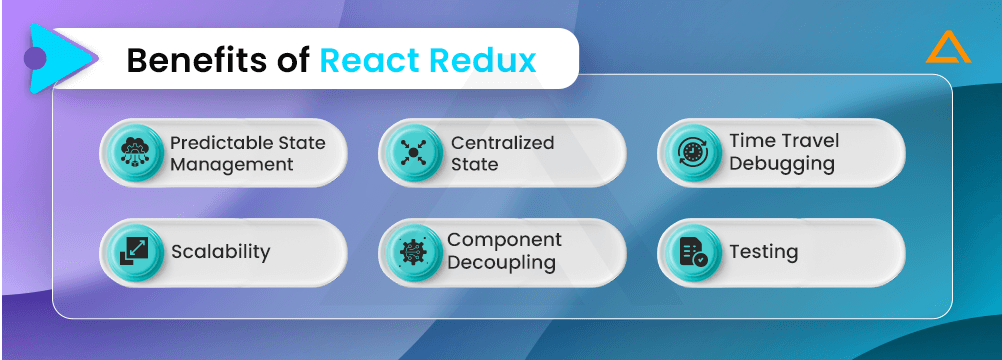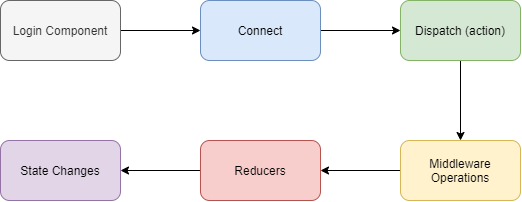React has emerged as a powerhouse for building dynamic user interfaces in the ever-evolving web development landscape. However, as your application grows in complexity, managing the state can quickly become daunting. Enter Redux—a game-changing library that has solidified its position as the backbone of scalable React apps.
Redux simplifies state management and provides a predictable way to handle data flow. Its architecture may seem intimidating at first glance, but once you grasp its core concepts, it becomes an invaluable tool in your development arsenal. Whether building small projects or large-scale applications, understanding Redux is essential for maintaining efficient code and enhancing performance.
Let’s dive deeper into why Redux remains indispensable for developers looking to create robust React applications that stand the test of time.
Benefits of Using Redux in Scalable React Apps
Redux offers a structured approach to managing state in large-scale React applications. Centralizing the application’s state ensures that all components have consistent access to data.
 This predictability simplifies debugging and testing. Identifying issues becomes straightforward when you can trace every action that updates your application’s state.
This predictability simplifies debugging and testing. Identifying issues becomes straightforward when you can trace every action that updates your application’s state.
Another significant advantage is scalability. As apps grow, Redux handles increased complexity without sacrificing performance or readability. Its middleware capabilities allow developers to extend functionality seamlessly.
Moreover, Redux fosters collaboration among teams. With a clear architecture, new members can quickly grasp how data flows through the app.
Integrating with tools like Redux DevTools provides powerful monitoring features. Developers can visualize changes over time and revert actions if necessary, enhancing productivity and confidence during development cycles.
Anatomy of a Redux App
A Redux app is built around a few core concepts. At its heart lies the store, which holds the entire application state. This centralized repository makes it easy to access and manage data across components.
Actions are another critical element. They are plain JavaScript objects that describe changes in the application. Each action must have a type property, allowing reducers to recognize how to update the state when an action is dispatched.
Reducers play a crucial role as well. These pure functions take the current state and an action as arguments and return a new state based on defined logic.
Middleware like Redux Thunk or Saga can be integrated to handle asynchronous actions efficiently. This layered architecture ensures that your React app remains predictable and manageable as it scales.
How Redux Works with React Components
Redux integrates seamlessly with React components, allowing for a clear data flow. The core idea is to keep the UI distinct from the application logic.
React components connect to Redux using the `connect` function from the `react-redux` library. This connection enables components to access state and dispatch actions directly from the Redux store.
When a component needs data, it maps specific state properties through a function known as `mapStateToProps.` It allows your component to receive only what’s necessary, optimizing performance.
Developers use `map Dispatch To Props` to handle user interactions or events. Components can trigger actions that update Redux’s global state through this mapping.
Combining these functions ensures that connected components automatically re-render based on updated state values every time an action is dispatched. Thus, it creates a dynamic and responsive user interface without unnecessary complexity.
Common Challenges and Solutions for Using Redux
Using Redux can present its challenges. One common issue is boilerplate code. Developers often need help with the setup required to create actions, reducers, and store configurations.
To tackle this, many turn to tools like the Redux Toolkit. This library simplifies the process by providing pre-built functions and structures significantly reducing boilerplate.

Another challenge arises when managing complex state updates. Ensuring that components receive the correct data at the right time can be tricky.
Employing selectors can help in this regard. Selectors allow developers to encapsulate logic for retrieving specific pieces of state, making it easier for components to access only what they need without unnecessary re-renders.
Debugging also poses difficulties due to asynchronous actions. Using middleware such as Redux Thunk or Saga enhances debugging capabilities while streamlining async operations within your apps.
Alternative State Management Libraries
While Redux is a popular choice for state management in React apps, several alternatives have emerged. Each has unique strengths and weaknesses.

MobX offers a more reactive approach. It uses observable states that automatically update components when data changes, making it easier to manage complex interactions without boilerplate code.
Recoil allows developers to create atoms and selectors, providing fine-grained state management. It integrates seamlessly with React’s Concurrent Mode, making it an appealing option for modern applications.
Another alternative is Zustand, which emphasizes simplicity and minimalism. Its API encourages a straightforward way of managing the state without unnecessary complexity.
Context API can be a lightweight solution for smaller projects or less demanding use cases where global state management isn’t critical. Each library has its niche; choosing the right one depends on your project’s specific needs and architectural preferences.
Conclusion and Future Outlook for Redux in React Development
Redux has firmly established itself as a key player in state management for React applications. Its predictable state container allows developers to maintain clear data flow and manage application states efficiently, which is vital when scaling up projects.
Looking ahead, Redux continues to evolve alongside advancements in the React ecosystem. The introduction of hooks has made it easier to integrate Redux into functional components, increasing its accessibility for new developers while also streamlining workflows for seasoned pros.
As more tools and libraries emerge that offer alternative solutions for state management, it’s essential to recognize why Redux remains relevant. Its strong community support ensures continuous improvement and innovation. Additionally, many developers appreciate its well-defined patterns and extensive middleware capabilities that can seamlessly handle side effects.
While alternatives like MobX or Recoil may better suit specific use cases, Redux’s robustness keeps it at the forefront of scalable app development. As organizations face increasingly complex requirements, having a reliable solution like Redux will likely remain pivotal in building high-performance applications that require meticulous state management today and in the future.

